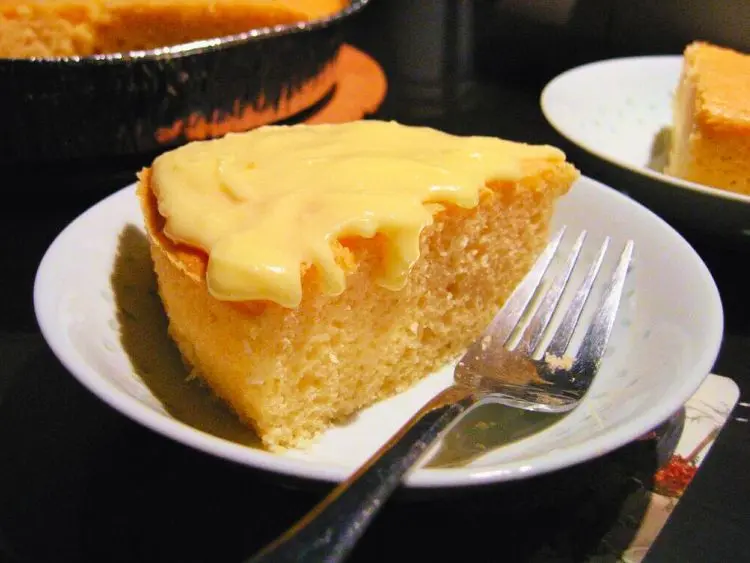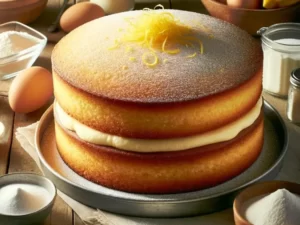Introduction to Pastry Cakes
A Delicious Journey into the World of Pastry Cakes
Have you ever gazed upon a beautifully crafted pastry cake and marveled at its intricate design and delectable aroma? These sweet masterpieces are more than just desserts; they are an embodiment of culinary artistry and cultural significance. In this article, we embark on a delightful journey to explore the world of pastry cakes, unraveling their history, popularity, and diverse forms.
From Humble Beginnings to Global Delights:
Pastry cakes boast a rich history dating back centuries. From ancient Egypt’s honey-sweetened cakes to the elaborate multi-layered creations of Europe, their evolution reflects the changing tastes and culinary innovations across civilizations. Today, these delectable treats have transcended borders, becoming cherished staples in celebrations, social gatherings, and everyday indulgences.
Beyond Just a Dessert: Cultural Significance and Celebrations:
Pastry cakes are not merely delicious treats; they are often woven into the fabric of various cultures. From birthday cakes symbolizing new beginnings to wedding cakes signifying a sweet union, these creations play a significant role in life’s milestones and traditions. Their presence adds a touch of elegance and joy to countless celebrations, leaving lasting memories for generations.
A Glimpse into the Article’s Treasures:
This comprehensive article delves into the fascinating world of pastry cakes, offering a plethora of information and insights. We explore classic and contemporary recipes, delve into expert baking tips and tricks, and discover healthier alternatives to cater to diverse dietary needs. Additionally, we unveil creative decorating ideas and delve into the cultural significance of these delectable treats, making this article an invaluable resource for aspiring and seasoned bakers alike.
Exploring Pastry Cake Varieties and Recipes
Classic Vanilla Cake with a Modern Twist
Ingredients:
- 2 cups all-purpose flour
- 1 ½ cups granulated sugar
- ¾ cup unsalted butter, softened
- 4 large eggs
- 1 cup whole milk
- 2 tsp pure vanilla extract
- 1 tsp almond extract (for a modern twist)
- ½ tsp baking powder
- ½ tsp baking soda
- ¼ tsp salt
- Zest of 1 lemon (optional, for a modern twist)
Instructions:
- Preheat Oven and Prep Pan: Preheat your oven to 350°F (175°C). Grease and flour two 9-inch cake pans.
- Cream Butter and Sugar: In a large mixing bowl, cream together the softened butter and sugar until light and fluffy.
- Add Eggs and Extracts: Beat in the eggs, one at a time, then stir in the vanilla and almond extracts. Add lemon zest here if you’re using it.
- Combine Dry Ingredients: In another bowl, whisk together the flour, baking powder, baking soda, and salt.
- Mix Dry Ingredients into Wet: Gradually add the dry ingredients to the wet ingredients, alternating with the milk. Start and end with the flour mixture.
- Bake: Divide the batter evenly between the prepared pans. Bake for 25-30 minutes, or until a toothpick inserted into the center comes out clean.
- Cool and Serve: Let the cakes cool in the pans for 10 minutes, then turn out onto a wire rack to cool completely. Once cooled, these cakes can be frosted with your choice of icing or enjoyed as-is.
This recipe is a perfect blend of classic and modern, with the almond extract and optional lemon zest providing a delightful twist to the traditional vanilla flavor. Feel free to experiment further with other modern elements like fruit purees or creative garnishes to personalize it to your taste!
Related: Mini Chocolate Bundt Cakes
Comparing Pastry Delights: Flavor, Texture, and Presentation
Navigating the diverse world of pastry cakes can be overwhelming, with so many tempting options vying for your attention. To help you make informed choices, let’s delve into a comparative analysis of popular pastry cake recipes, focusing on their distinct flavor profiles, textures, and presentation styles.
Flavor: A Symphony of Sweetness:
- Vanilla Cake: This quintessential flavor offers a clean and delicate sweetness, often described as comforting and nostalgic. Its versatility allows customization with various extracts, such as almond or orange, for subtle variations.
- Chocolate Cake: With its intense richness and cocoa depth, chocolate cake is a timeless favorite for lovers of all things decadent. From dark and bittersweet to milk and white chocolate, the range of flavors caters to diverse preferences.
- Fruit Cakes: These dense and flavorful treats are packed with a medley of dried fruits and nuts, offering a complex and fruity sweetness. The addition of spices like cinnamon and nutmeg adds warmth and depth to the taste profile.
Texture: From Light and Airy to Dense and Decadent:
- Sponge Cakes: These light and airy cakes are characterized by their fine crumb and delicate texture, achieved through careful whisking of eggs and precise folding techniques. They melt in your mouth, leaving a light and delightful sensation.
- Pound Cakes: Dense and moist, pound cakes boast a rich and buttery texture. Their heavier consistency makes them ideal for layering and frosting, creating substantial and decadent treats.
- Cheesecakes: Combining a creamy and smooth filling with a crumbly crust, cheesecakes offer a unique textural experience. The creamy filling provides a luxurious mouthfeel, while the contrast of the crust adds a satisfying crunch.
Presentation: A Visual Feast for the Eyes:
- Naked Cakes: Embracing a rustic charm, naked cakes are frosted minimally or left unfrosted, showcasing the cake’s natural beauty. The focus is on the intricate layering and vibrant colors of the cake itself.
- Decorated Cakes: From intricate piping and fondant designs to cascading fruit arrangements, decorated cakes are a visual masterpiece. The creativity and skill of the baker are on display, transforming simple cakes into stunning works of art.
- Miniature Cakes: Offering a playful and individual experience, miniature cakes are perfect for parties and celebrations. Their smaller size allows for greater variety and creativity in flavor and presentation.
Expert Baking Tips and Tricks: Techniques for Perfect Results
Elevating your pastry creations from good to great requires mastering key baking techniques. Here are some expert tips to ensure your cakes are consistently moist, flavorful, and visually stunning:
- Precise Measurements: Accuracy is crucial. Use measuring cups and spoons for dry and wet ingredients respectively, and avoid over-packing.
- Room Temperature Ingredients: Bringing ingredients to room temperature ensures even mixing and prevents lumpy batter.
- Gentle Mixing: Overmixing can lead to tough cakes. Mix until just combined, avoiding incorporating excess air.
- Oven Temperature Control: A preheated oven ensures consistent baking. Invest in an oven thermometer to verify the accuracy of your oven’s temperature.
- Cooling Techniques: Allowing cakes to cool properly prevents them from collapsing and ensures the perfect crumb texture. Use a wire rack for optimal air circulation.
Healthier Alternatives and Dietary Adaptations: Gluten-Free, Vegan Options
Embracing a healthier lifestyle doesn’t mean sacrificing your love for pastry cakes. Explore these delicious alternatives to satisfy your cravings:
- Gluten-Free: Substitute all-purpose flour with gluten-free flour blends, such as almond flour or coconut flour. Ensure the chosen blend has similar properties and adjust recipe quantities as needed.
- Sugar-Reduced: Substitute refined sugar with natural sweeteners like honey, maple syrup, or stevia. Adjust sweetness levels to your taste and consider the impact on baking properties.
- Vegan: Opt for plant-based alternatives like aquafaba (chickpea brine) for egg whites and dairy-free butter or margarine. Choose vegan-friendly chocolate and use plant-based milks in recipes.
Explore cookbooks and online resources specifically tailored to gluten-free and vegan baking, ensuring you have a vast array of healthy and delicious options at your fingertips.
Decorating and Presentation Ideas: Creative and Aesthetic Enhancements
Beyond the delicious flavors and textures, presentation plays a crucial role in elevating your pastry creations. Here are some creative and aesthetic ideas to add a touch of magic:
- Simple Elegance: Dust cakes with powdered sugar or cocoa powder for a classic and elegant finish. Add fresh berries or edible flowers for a touch of color.
- Piping Magic: Master the art of piping to create intricate borders, rosettes, and other decorative designs. Experiment with different tips and colored frostings for a personalized touch.
- Tempered Chocolate Drips and Ganache: Impress your guests with cascading chocolate drips or a smooth layer of ganache. These techniques add a professional touch and enhance the cake’s visual appeal.
- Edible Decorations: Explore handcrafted sugar decorations, fondant figurines, or edible glitter for an eye-catching and unique presentation.
- Themed Creations: Tailor your cake’s décor to the occasion. Use seasonal fruits, candy pieces, or edible markers to create themed designs for birthdays, holidays, or special events.
Embrace your creativity and experiment with different decorating techniques. Remember, presentation is an extension of your culinary artistry, allowing you to turn pastry cakes into edible works of art.
FAQs
1. Can I Substitute Whole Wheat for All-Purpose Flour in Pastry Cakes?
Answer: Substituting whole wheat flour for all-purpose flour in pastry cakes can significantly alter the texture, making the cake denser, drier, and more crumbly. This is due to the germ and bran in whole wheat absorbing more water. While it’s not recommended for light and tender cakes, you can substitute up to 25% of the white flour for whole wheat in recipes like pancakes, muffins, and quick breads, where the batter is more liquid.
2. Is It Possible to Make Pastry Cakes Gluten-Free or Vegan?
Answer: Adapting non-vegan or gluten-full pastry cake recipes to be vegan or gluten-free is a complex task, best left to advanced bakers. Vegan baking often involves substituting eggs and dairy, which can be quite challenging. Similarly, making a gluten-full recipe gluten-free requires significant adjustments. It’s advisable to start with a reliable vegan or gluten-free recipe rather than trying to adapt a traditional one.
3. Do I Really Need Parchment Paper for Baking Pastry Cakes?
Answer: Parchment paper is an essential tool in baking pastry cakes. It creates a nonstick surface, ensuring that cakes release cleanly from the pan, brownies lift out easily, and cookies slide off the baking sheet without sticking. While it can be slightly expensive, its benefits, such as preventing cakes from sticking to the pan, make it a worthwhile investment for successful baking.
Conclusion: A Sweet Celebration of Pastry Cakes
The journey through the world of pastry cakes has been a delightful exploration of flavors, textures, and artistic expression. We’ve delved into classic recipes and embraced innovative twists, explored popular options and discovered healthier alternatives, learned invaluable baking tips, and unleashed our creativity through captivating decorations.
With each delicious creation, pastry cakes remind us of the simple joys of life. They bring people together, celebrate special occasions, and offer a sweet escape from the everyday. Whether you are a seasoned baker or a curious beginner, the world of pastry cakes welcomes you with open arms and endless possibilities. So, grab your mixing bowl, unleash your inner artist, and embark on your own sweet adventure in the land of pastry delights.
Remember, baking is a journey, not a destination. Enjoy the process, embrace your mistakes as learning opportunities, and most importantly, have fun! As you continue exploring and experimenting, you’ll soon discover that the greatest reward is not just the final product, but the joy of creation and the happiness that your creations bring to others. So, bake with passion, share with love, and let’s continue celebrating the magic of pastry cakes!


